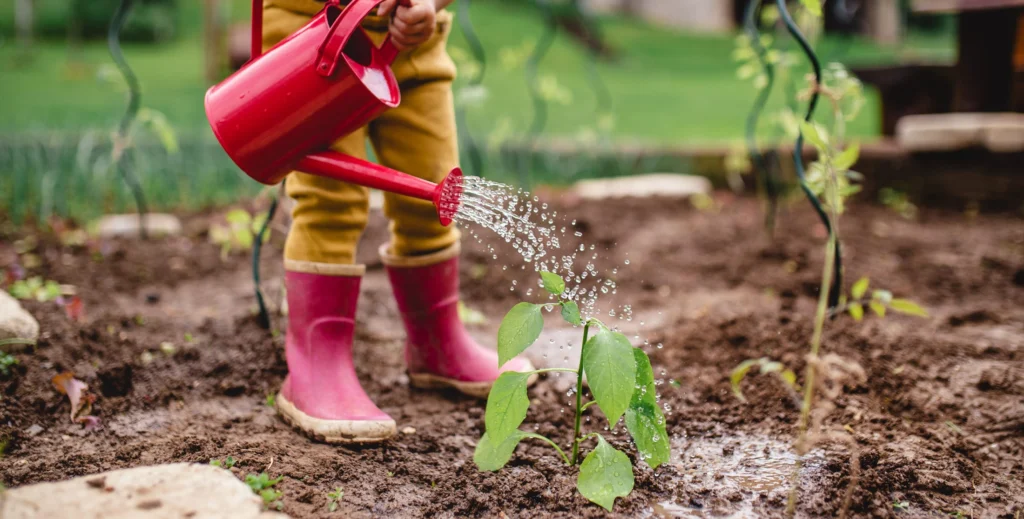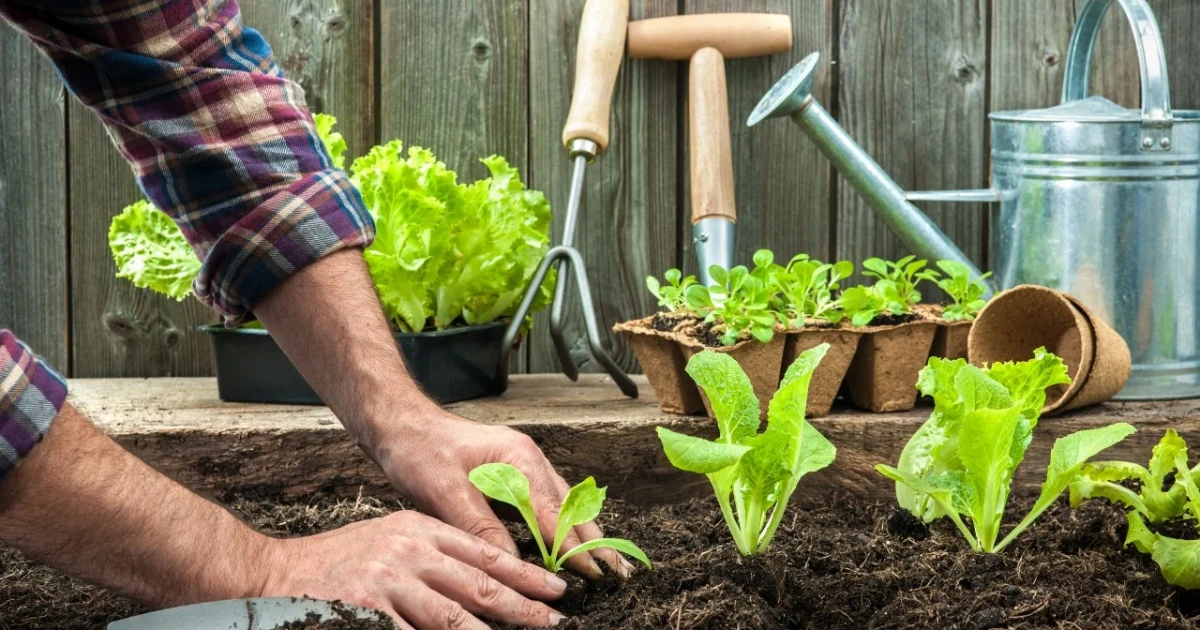July might feel like the middle of the gardening season—but it’s actually a golden moment to breathe new life into your garden. Whether you’ve got a few empty spots in your raised beds or you’re just starting a container garden on your balcony, midsummer planting can bring beauty, flavor, and productivity into late summer and even fall.
If you’re new to summer planting, don’t worry. The Secrets of the Green Garden’s summer tips section has helpful insights for planning your midsummer gardening routine. And if you’re working with small spaces, try reviewing their section on creative container planting, perfect for balconies and patios.
So grab your gloves, grab your seeds, and let’s dig into what you can plant in July for a garden that’s still bursting with life.
🌱 Why July Is Still a Great Time to Plant
While spring may be the traditional time to start a garden, July offers a second chance to grow. Warm soil speeds up germination, and longer days support rapid growth. Plus, many vegetables and herbs thrive in the heat when planted now.
You can also use July to fill in gaps left behind after harvesting early crops like radishes, spinach, or peas. This is known as succession planting—and it’s one of the smartest strategies for getting continuous harvests throughout the year.
Planting in July is perfect for:
- Heat-loving vegetables like tomatoes, corn, and zucchini
- Fast-growing herbs and greens
- Summer flowers that attract pollinators
- Starting autumn root crops like garlic and onions
- Refreshing your herb garden with basil or chamomile
The key is to choose varieties that match your climate and mature quickly enough to beat the first frost—especially in cooler regions.
🍅 What to Plant in July: Crop by Crop
🥬 Vegetables & Legumes
Maize (Sweet Corn) 🌽
Plant in full sun with space for pollination (at least four rows together). Water deeply once or twice a week.
Zucchini 🥒
Quick-growing and prolific. Harvest when fruits are young for best flavor.
Peas 🌱
In cooler climates, you can plant snap or snow peas now. Provide shade from afternoon sun.
Cucumbers 🥒
Plant with a trellis or let them sprawl. They need consistent watering and heat to thrive.
Tomatoes 🍅
Stick to determinate (bushy) or cherry varieties that mature fast. Use mulch to retain soil moisture.
🧄 Bulbs & Roots
Onions 🧅
Best planted from sets in loose, fertile soil. Great for fall harvesting.
Garlic 🧄
In warmer zones, you can sneak in another round. Plant cloves pointed-end up, 2 inches deep.
Potatoes 🥔
Early varieties planted now can yield a small fall harvest. Hill soil around plants as they grow.
Beets and Carrots
These root crops do well in cooler zones. Keep soil moist during germination.
🌿 Aromatic Herbs
Basil 🌿
Loves heat! Pinch off flowers to encourage bushy growth and longer harvest.
Rosemary 🌿
Slow starter but very hardy. Perfect for containers.
Chamomile 🌼
Fragrant, beautiful, and excellent for tea. Prefers well-drained soil and light sun.
Cilantro and Dill
Quick to grow—great companions to cucumbers and carrots.
🌼 Summer Flowers
Geraniums 🌺
Colorful, hardy, and great in pots or window boxes.
Marigolds 🌼
Not only beautiful—they also repel many garden pests naturally.
Carnations 🌸
Add charm and color to flower beds. Can be grown from seed or transplant.
Coneflowers and Lavender
Excellent for pollinators and withstand summer drought.
If you’re planting flowers to support your vegetables, check out how companion planting is used with marigolds in the pest-resistant garden beds section. They offer real protection—and they’re pretty too.
🧰 Essential Tools and Materials for July Planting
🧤 Gardening gloves
🌱 Seeds or starter plants
🪴 Pots or raised beds
🌾 Organic compost or fertilizer
🚿 Watering can or hose
🧹 Mulch for moisture retention
🪢 Trellises or supports (for cucumbers, peas, tomatoes)
📅 Notebook or gardening journal
Having your tools ready means you can take advantage of ideal weather windows, especially early in the morning or late in the evening when temperatures are cooler.
☀️ Pro Summer Planting Tips
- Water in the early morning or evening to prevent evaporation
- Mulch around your plants to keep soil cool and moist
- Use light-colored pots to reflect heat in sunny areas
- Add shade cloth for tender seedlings in extreme heat
- Harvest often to encourage continuous production
Remember, midsummer gardens need a little more hydration and a little more attention—but the rewards are worth it.

❌ Common Mistakes When Planting in July (And How to Avoid Them)
Even seasoned gardeners make errors during the summer season. July’s intense heat and fast growth cycles mean little mistakes can cost you an entire crop.
Here’s what to watch out for:
1. Overwatering or underwatering
Hot weather means plants dry out fast—but overwatering can suffocate roots. Stick your finger into the soil—if it’s dry 2–3 cm down, it’s time to water.
2. Ignoring maturity dates
Planting a tomato variety that takes 90 days to mature in a climate with a short growing season? Bad idea. Always check the days to harvest and count back from your area’s first expected frost.
3. Skipping mulch
Exposed soil bakes in the sun, loses moisture quickly, and invites weeds. Use straw, shredded leaves, or wood chips to protect it.
4. Forgetting pest control
Aphids, whiteflies, and cabbage moths thrive in summer. Use the advice from the natural pest control guide to keep pests away without chemicals.
5. Planting too close
Plants need airflow to avoid disease. Always follow spacing recommendations—especially in humid zones.
🌿 Top Benefits of Planting in July
Why should you even bother planting in July? Actually, it might be the best-kept secret in home gardening.
- You get a second harvest. Many quick-maturing crops will be ready in just 6–8 weeks.
- Better pest control. Certain pests peak in spring and early summer, making midsummer a safer time.
- Perfect for herbs and flowers. Heat-loving herbs like basil, thyme, and marjoram love this time of year.
- Supports pollinators. Adding marigolds, lavender, or echinacea now supports bees and butterflies through late summer.
Plus, companion planting works brilliantly with July crops—especially when you combine herbs with veggies.
🗺️ Regional & Seasonal Planting Tips
Every garden is different depending on where you live. Here are some ideas to help you tailor your midsummer planting.
🏜️ Hot & Arid Regions (USDA zones 9–11)
- Stick to drought-resistant herbs (oregano, rosemary, sage)
- Water deeply, but less frequently
- Use shade cloth for young seedlings
⛰️ Mild & Coastal Climates (USDA zones 7–9)
- Great for peas, lettuce, and cool-loving herbs like cilantro
- Watch for mildew due to humidity
- Great time to plant fall root vegetables
🌲 Cooler Regions (USDA zones 4–6)
- Plant quick crops: radishes, baby greens, early carrots
- Choose tomato and zucchini varieties under 60 days
- Cover plants on cold nights near end of season
🏡 Small-space gardening? You’re in luck. July is ideal for container setups. Check the vertical gardening tricks to maximize your space and beat the heat.
🧺 July Gardening Checklist 🛠️🌼
Here’s everything you need to plant smart and stay cool this month:
🌱 Fast-growing seeds or starter plants
🪴 Well-drained soil or compost
📦 Mulch (straw, bark, leaves)
🧤 Gloves and a hand trowel
🪢 Stakes or cages for tall plants
🌿 Pest-repelling companion plants (basil, marigolds)
🧺 Shade cloth or row covers
📓 Garden planner or app for tracking progress
Don’t forget your hat and sunscreen. Garden smart, not hot!
❓FAQs About July Planting
Is July too late to start a garden?
Not at all. July is perfect for fast-growing crops and herbs. Just check how many days your chosen plant needs to mature.
What vegetables grow best when planted in July?
Zucchini, cucumbers, bush beans, peas, carrots, and potatoes thrive in July if planted with enough time before frost.
Can I still plant flowers in July?
Yes! Marigolds, geraniums, petunias, and cosmos are great choices for instant summer beauty.
Should I use mulch in summer planting?
Absolutely. Mulch keeps soil moist and cool, reduces weed growth, and protects plant roots from heat.
Is it better to grow in containers in July?
Containers work great—especially for herbs, flowers, and small veggies. They’re easier to water and protect in heat.
🌻 Wrap-Up: Time to Get Growing!
Just because it’s July doesn’t mean the gardening fun is over. On the contrary—it’s a fresh chance to extend your harvest, grow fresh herbs, and add color to your garden with vibrant summer flowers.
Now it’s your turn! 🌱
What will you be planting this month? Share your favorite midsummer crop or flower in the comments—and tag us if you try out any of the tips from this guide.
Happy planting, and don’t forget to explore more ideas on Secrets of the Green Garden for year-round inspiration!


7yobzf
https://t.me/s/flagman_official_registration
https://t.me/s/iGaming_live/4866